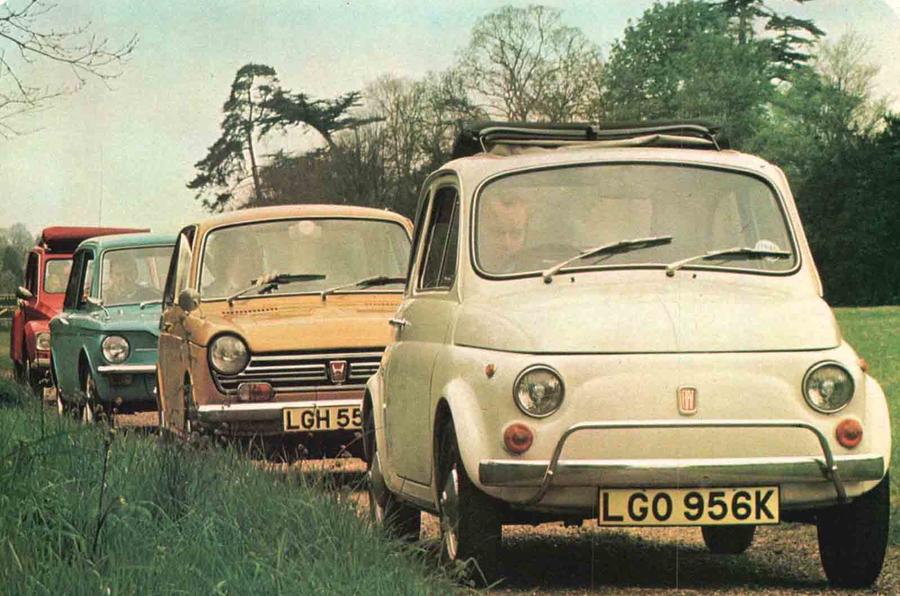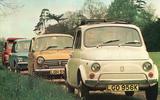Inflation is hurting us all right now, but thank goodness it isn’t stagflation, as Britain suffered in the early 1970s: a soaring cost of living and economic stagnation.
This meant that by 1972, even the Ford Escort cost a “remarkably high” £802 (although that’s equal to just £8062 in modern money).
The time was therefore ripe for us to compare the four cheapest cars on sale: the Citroën Dyane (£637), Fiat 500 (£531), Honda N600 (£637) and Hillman Imp (£642).
Subscribe to the Autocar Archive today
The Fiat was painfully slow, reaching 60mph a minute late, at 83.2sec, despite being no more frugal, each car doing about 125 miles per £1 of petrol (78p a litre).
Nevertheless, “if you really want smallness in size and price, the Fiat wins over all its rivals”, we said. The Honda impressed by being “compact enough to weave through city traffic and able to beat cars twice its capacity”.
We didn’t get why the Hillman wasn’t more popular, “practical and great fun to drive” as it was
But the Citroën was alone in being able to “take a full-sized family and all their luggage” and better still was “a happy car, from which you can laugh at the world as it tumbles past the windows”.
Excellent new Alfa saloon

The Alfasud family hatchback broke with Alfa Romeo tradition in having a dead rear axle, and this continued on the Alfetta, which slotted in between the popular Giulia and plush 2000. “It’s a very civilised car, one of the most roadworthy saloons available anywhere, yet easy to drive” and it had “precious few points worthy of criticism”, we reported.
Truck for developing world












Join the debate
Add your comment
That explains it, but even so the Mini was less than 1% more expensive than the Imp!Cost was always the Mini's problem and famously the model never made any money for its maker.
I remember regularly driving a battered Imp back in the late 70s. It was a hoot to drive and the engine was fantastic; even though it only had four gears with top being geared about equivalent to 2nd in most modern cars, I nevertheless left it in third a couple of times at high speed without noticing. The engine was that free revving and so smooth! It was much more practical, roomy and sophisticated in feel than the Mini - shame it wasn't anything like as successful.
Fantastic group test. Those cars may have been slow and simple, but they were good fun and full of character - but why wasn't the Mini included (maybe it broke down?).
Shame there is no cheap and cheerful modern equivalent.
Hi LP – a Mini was due to be included, as the writers had set themselves a budget of £650, but BL hiked the price over that just before we conducted the test.